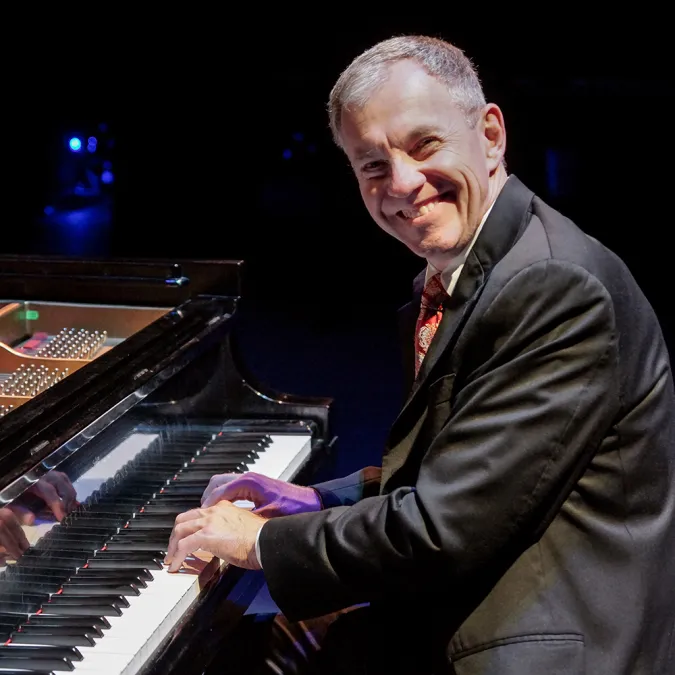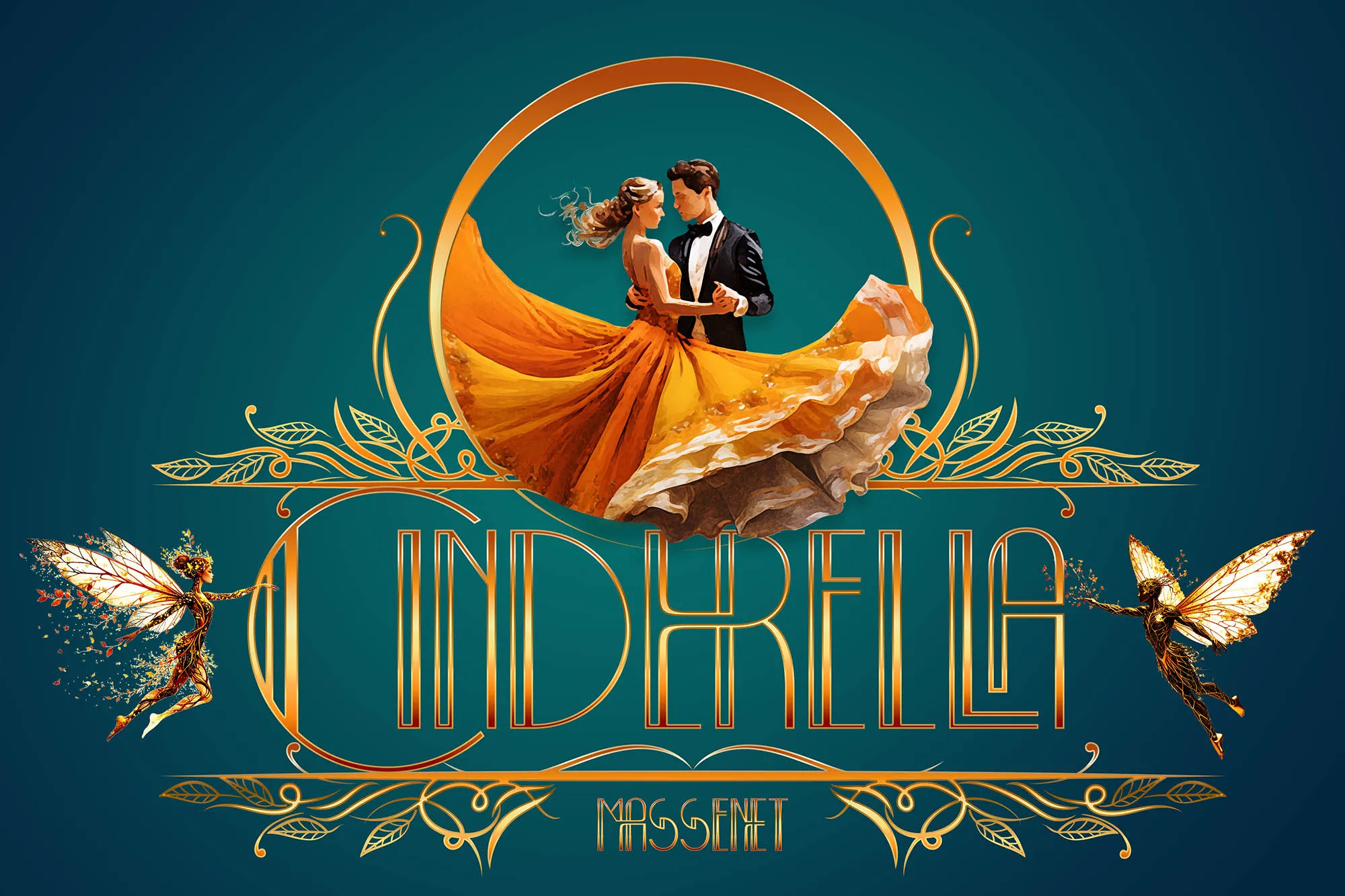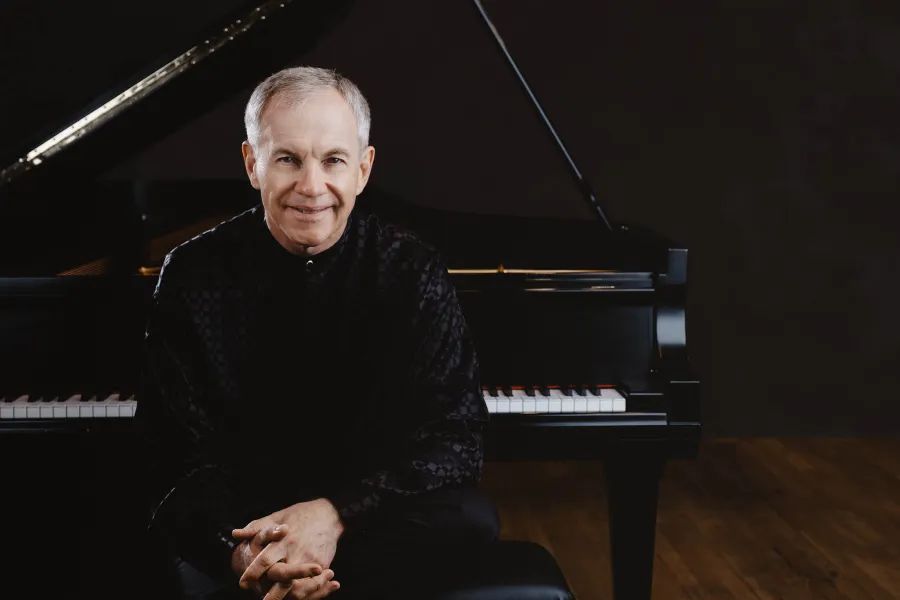This concert will last about 70 minutes without intermission.
Please silence your electronic devices.
Photography, video, or recording of any part of this performance is prohibited
Program
Franz Joseph Haydn
Sonata in C, Hob XVI:50
Allegro
Adagio
Allegro molto
Franz Schubert
Drei Klavierstücke, D. 946
Impromptu in E-flat Minor
Impromptu in E-Flat Major
Impromptu in C Major
Alexander Scriabin
Prelude in G-flat Major, op. 16, no. 3
Dmitri Shostakovich
Prelude in C-sharp Minor, op. 34, no. 10
Sergei Prokofiev
Prelude in C Major, op. 12, no. 7
Sergei Rachmaninoff
Prelude in G Major, op. 32 no. 5
Frédéric Chopin
Andante Spianato And
Grande Polonaise Brilliante,in E-flat, op. 22
About the Program
Program notes by Mark Bilyeu except where noted.
Franz Joseph Haydn
Sonata in C, Hob. XVI/50
Born March 31, 1732, Rohrau, Austria
Died May 31, 1809, Vienna, Austria
Composed 1794–1795
Premiered 1795 by Therese Jansen Bartolozzi
Duration 15 minutes
In 1794, Haydn made his second trip to London—a city in which he felt well-appreciated and joyful. Audiences at his concerts were large and enthusiastic. As historian Charles Burney wrote, “Haydn himself presided at the piano-forte, and the sight of that renowned composer so electrified the audience, as to excite an attention and a pleasure superior to any that had ever been caused by instrumental music in England.” This monothematic C major sonata is an exercise in extremes. It opens with a brash, staccato theme that is immediately re-stated as lush, rolling chords, and then re-harmonized and developed throughout the movement. Haydn indicates the use of the una corda pedal—the newest technology available on the British Broadwood fortepianos, which had a fuller sound than their German equivalents—to create further contrast with mysterious and ethereal explorations in related keys. The second movement is a meditative and gracefully embellished Adagio. The final movement shows Haydn at his most humorous, with lopsided phrases, sudden silences, and disorienting feints to remote keys. The piece was “composed expressly for and dedicated to Mrs. Bartolozzi by Haydn.” Therese Jansen Bartolozzi (1770–1843) was one of the best pianists of her time and supported herself and her two children by teaching piano after separating from her artist husband in London in 1821.
– Penny Brandt
Franz Schubert
Drei Klavierstücke, D. 946
Born January 31, 1797, Himmelpfortgrund, Vienna, Austria
Died November 19, 1828, Vienna, Austria
Composed 1828
Premiered 1828
Duration 28 minutes
In July of 1828, hot on the heels of the publication of his Moments musicaux, Franz Schubert wrote two more works for solo piano. Any publication for Schubert was a huge personal victory; publishing meant financial stability – however fleeting – and for someone who had less than one quarter of his output published during his lifetime, stability was ephemeral and precious. Schubert likely never intended these three works to be grouped together in any meaningful way. In fact, they remained orphaned and un-titled until an unnamed editor (cough Johannes Brahmscough) collected, edited, named, and published them as “Drei Klavierstücke” forty years after Schubert’s death. What unifies them is their structure, the ternary form of A-B-A. What endears them to both performer and listener is their deeply-Schubertian melodies, their elegant turns of phrases, and their profound dualities of joy and longing. As Robert Schumann wrote of his predecessor: “What the diary is to others, in which their momentary emotions and so forth are recorded, so to Schubert was music paper, to which he entrusted all his moods. His thoroughly musical soul wrote notes where others used words.”
Alexander Scriabin
Prelude in G-flat Major, op. 16, no. 3
Born January 6, 1872, Moscow, Russia
Died April 27, 1915, , Moscow, Russia
Composed January, 1884
Duration 2 minutes
While studying at the Moscow conservatory, the nineteen year old Scriabin suffered from severe anxiety (with classmates like Sergei Rachmaninov, Josef Hofmann and Josef Lhévinne, you would be feeling the pressure, too!). He was allowed to graduate early, and through the support of an administrator, was introduced to the influential music publisher Mitrofan Belyayev. It was his connection to Belyayev that offered Scriabin a chance to travel across Europe with Paris as the culminating destination. Before he left, however, he made a wager with the publisher that he could compose 48 piano preludes before his departure. It was in his effort to win that bet that he crafted his Twenty-Four Preludes, Op. 11, and his set of Five Preludes, Op. 16. In total, he would craft nearly 90 piano preludes throughout his lifetime. The five preludes within Op. 16 are wed together by their lyrical nonchalance and their approachable warmth; the third in the set (heard on this program) is a lovely oscillation between chorale and improvisation.
Dmitri Shostakovich
Prelude in C-sharp Minor, op. 34, no. 10
Born September 25, 1906, Saint Petersburg, Russia
Died August 9, 1975, Moscow, Russia
Composed 1932 - 1933
Duration 2 minutes
Despite being a prize-winner in the 1927 Chopin Piano Competition in Warsaw, the influences of the Polish maverick might not be immediately evident in the music of Dmitri Shostakovich. In fact, the same year as that international triumph as a pianist, Shostakovich composed a set of piano miniatures he called Aphorisms that would have left Chopin scratching his head. Five years later, however, the composer set out to write something very Chopin-esque: a complete compendium of preludes in every major and minor key, his Twenty Four Preludes, op. 34. Shostakovich not only published them in the same sequence as Chopin, but composed them in that same order, as well.
Sergei Prokofiev
Prelude in C Major, op. 12, no. 7
Born April 27, 1891, Sontsivka, Ukraine
Died March 5, 1953, Moscow, Russia
Composed 1906-1913
Premiered January 23, 1914, Moscow, Russia
Duration 3 minutes
Unlike Rachmaninoff, Scriabin, Chopin, and Shostakovich, Sergei Prokofiev never set out to write a series of preludes to cover every key. In fact, aside from an arrangement of a prelude and fugue by Buxtehude, Prokofiev only wrote one work for the piano with the title of “Prelude,” which comes from his Ten Pieces, Op 12. Subtitled “the harp” (for reasons that will be very clear), the composer premiered his prelude, along with the rest of the set, at the same concert as the premiere of Second Piano Sonata. He also included it in his U.S. debut recital at New York’s Aeolian Hall in 1918. That concert, which featured much of his own music, led the New York Times reviewer to write that “Prokofieff uses, like Arnold Schonberg, the entire modern harmonies.... He is a psychologist of the uglier emotions - hatred, contempt, rage - above all rage... Occasionally there are moments of tenderness; exquisite jewels that briefly sparkle and then melt into seething undertow.” We can be certain that the “exquisite jewel” the reviewer mentions is, indeed, this beloved prelude.
Sergei Rachmaninoff
Prelude in G Major, op. 32. no 5
Born April 1, 1873, Starorussky Uyezd
Died March 28, 1943, Beverly Hills, CA
Composed 1910
Premiered April 4, 1910, Moscow, Russia
Duration 3 minutes
Rachmaninoff began his cycle of preludes in 1892, at the age of 19, with his famous Prelude in C-sharp Minor, op. 3, no. 2, a work which would follow him throughout his entire life (audiences would demand he play this as an encore at nearly every performance of his for the rest of his life). Eleven years later, he published the next installment: his 10 Préludes, op. 23, and seven years after that, he completed his 24 preludes in every major and minor key with his 13 Prèludes, op. 32. Despite a letter in which he described his creative process for the final set as having “neither beauty nor joy in it,” Rachmaninoff’s preludes are astounding works, bound tightly by theme and rhythmic motives, each containing its own ecosystem of technical challenges and storytelling. No. 5 in this final set, is unique for its languid romanticism amongst the many other angular, more ostentatious preludes the now-seasoned composer crafted. As pianist Carlo Grante described it, the prelude is “a hybrid of barcarolle and berceuse, even if it is set in 4/4 time.” While the complete set was premiered by the composer in 1911, we know that Rachmaninoff used this G Major prelude as an encore after the first Russian performances of his Piano Concerto No. 3 in April of 1910.
Frédéric Chopin
Andante spianato et grande polonaise brillante in E-flat Major, op. 22
Born March 1, 1810, Żelazowa Wola, Poland
Died October 17, 1849, Paris, France
Composed 1830-1834
Premiered April 26, 1835, Paris Conservatory, Frédéric Chopin, Pianist
Published 1836
Duration 14 minutes
Chopin’s Op. 22 is what writer Malcolm Gladwell might call an ‘outlier.” Chopin composed the polonaise in 1830, just before his move to Paris, first conceiving it as a work for solo piano, and then for piano and (very minimal) orchestral accompaniment. He set the polonaise aside until 1835 when he had a rather radical idea to add an entirely different work—a nocturne—as a preface. Now, Chopin didn’t call it a nocturne (he wrote 21 works that he did identify as nocturnes), but instead used the term spianato meaning “smooth” or “even,” which was a term he saved exclusively for this piece. In it, Chopin asks the left hand to take the yeoman’s share of the work in its gentle ripplings below a melody line Bellini could only dream of. You’ll know when the polonaise starts: there’s a trumpet call (at least in the orchestral version, in this version for piano solo, the piano sounds the call on the trumpet’s behalf). The polonaise originated as one of Poland’s five national dances, and was, over time, appropriated and gentrified to the highly-regal musical form we associate almost exclusively with Chopin. You’ll recognize the polonaise by its strict rhythmic identity: a work in triple meter with the left hand delivering the pattern of “eighth note, two sixteenths, and four eighth notes.” The work acts as a sort of theme and variations, interspersed with a recurring refrain. As the work builds momentum, it collects trills, double thirds, arpeggios, and marathon-like runs along the way, barrelling towards its thrilling conclusion. This would be the last work of this type, known as stile brillante, that Chopin would write. The premiere of the work—a benefit concert at the Paris Conservatory—would also be the last time Chopin would appear as a pianist, as he made conscious decisions to move towards his persona as a composer, rather than that of a virtuoso. And what better way to exit the stage, than by offering one of the most technically demanding works for an instrument Chopin would continue to influence for the rest of his life.
About Anton Nel

Winner of the 1987 Naumburg International Piano Competition at Carnegie Hall, Anton Nel continues to tour internationally as recitalist, concerto soloist, chamber musician and teacher. Highlights in the U.S. include performances with the Cleveland Orchestra, and the Chicago, San Francisco, Dallas, Seattle, and Detroit Symphonies (he has a repertoire of more than 100 works for piano and orchestra.) In addition to recitals in virtually every U.S. state he has appeared overseas at the Wigmore Hall in London, the Concertgebouw in Amsterdam, Suntory Hall in Tokyo, as well as major venues in China, Korea, and South Africa. Much sought after as a chamber musician he regularly appears with some of the world’s finest instrumentalists and singers at festivals on four continents. He holds the Joe R. and Teresa Lozano Long Endowed Chair at The University of Texas at Austin and also gives an annual series of masterclasses at the Manhattan School of Music and the Glenn Gould School in Toronto. During the summers he is on the artist-faculties at the Aspen Music Festival and School, the Steans Institute at the Ravinia Festival, and the Orford Music Academy in Quebec. Nel also frequently performs as harpsichordist and fortepianist. His recordings include four solo albums, chamber music recordings (including the complete Beethoven and Brahms cello/piano works with Bion Tsang), and works for piano and orchestra by Franck, Faure, Saint-Saens and Edward Burlingame Hill. The Johannesburg-born Mr. Nel is a graduate of the University of the Witwatersrand, where he studied with Adolph Hallis, and the University of Cincinnati where he worked with Bela Siki and Frank Weinstock.
His website is antonnel.com.
Upcoming Events

Butler Opera Center Presents
CInderella
by Jules Massenet
Massenet’s telling of the beloved fairytale has everything you’d hope for: luxurious love duets, a fairy godmother with atmospheric vocal acrobatics, a missing glass slipper, two ugly stepsisters with a mother you love to hate, and an overlooked heroine who ultimately finds true love. Even at its 1899 premiere, critics and audience members alike adored the opera’s snappy wit, compelling music, and its unavoidable charm (princes included) . . .
Friday, October 17 & 24, 7:30 p.m.
Sunday, October 19 & 26, 4:00 p.m.
McCullough Theatre
Andrew Brownell, piano
Monday, October 6, 7:30 p.m.
Bates Recital Hall
Triple Cortado Album Release Concert
Tuesday, October 14, 7:30 p.m.
Bates Recital Hall
Symphony Orchestra
Wednesday, October 15, 7:30 p.m.
Bates Recital Hall
Schubertiade with Anton Nel & Friends
Monday, November 3, 7:30 p.m.
Bates Recital Hall
Event Details
$10 – 20
All University of Texas at Austin students are allowed one free ticket as long as they are available. Student tickets must be picked up at the Box Office with valid student I.D. Seating is unassigned.
If you are a patron with specific seating needs, please email tickets@mail.music.utexas.edu and we will reserve ADA seating for you.


